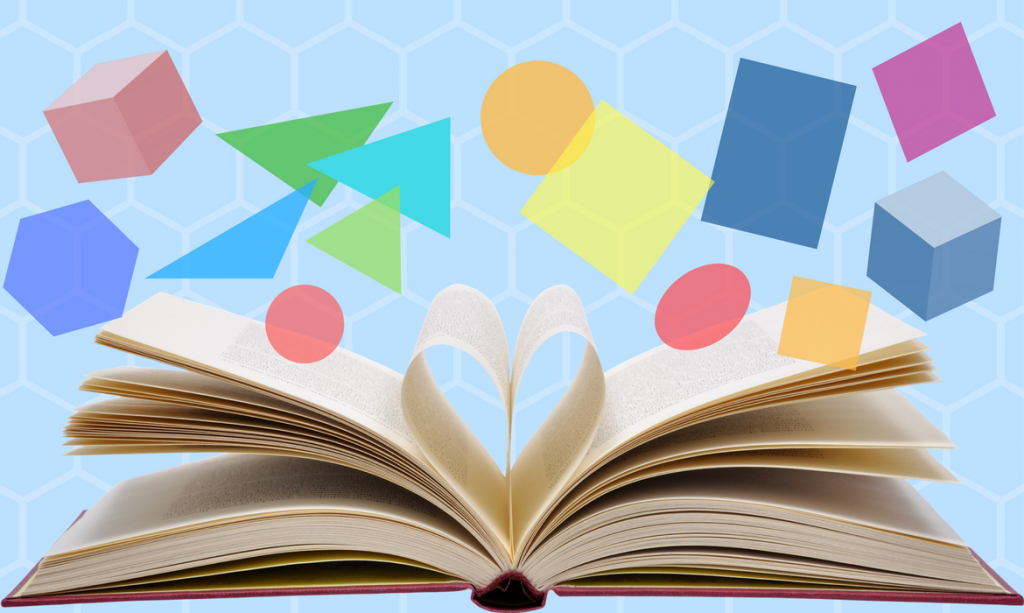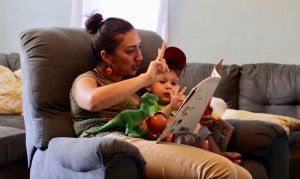When we think of how young children learn about shapes and spatial reasoning, we most often think of blocks and puzzles. But young children can also learn these foundational math concepts from the picture books parents and teachers read to them.
Picture books specifically dedicated to shape should show illustrations of different examples of the same shape, and describe the characteristics of shapes in the text. Young children need many experiences with a variety of shapes so that they develop a rich, flexible understanding of shapes.
Without variety and flexibility, children can develop rigid definitions. For example, if they only see isosceles triangles (with two longer sides and one short base) standing upright on a horizontal base, children might not recognize a rotated triangle or one with three unequal sides. They must learn that they can rotate a triangle and enlarge or shrink the sides and it will remain a triangle. By seeing, manipulating, drawing, and talking about different types of triangles, children develop spatial reasoning skills such as mental rotation, visual spatial reasoning, and spatial vocabulary.
If a picture book does not present shapes in various positions and sizes, you can rotate the pages and ask, Is this still a triangle? How do you know? When reading shape books, you can also talk about the characteristics of the shapes: How many sides does the square have? How many sides does the triangle have? Which one has more sides?
Some math picture books include ideas about space and use spatial vocabulary in the text, such as inside, outside, up, down, left, and right. These words are often closely connected to what is happening in the illustration, helping children make the connection between spatial language and the direction or location it references.
Five Great Picture Books to Learn About Shape and Space
We recommend the following picture books for opportunities they provide to bond, to enjoy, and to stimulate the child’s understanding of shapes and space.
Berenstain, S. & Berenstain, J. (1968). Inside, Outside, Upside Down. New York: Random House.
In this simple story, Brother Bear gets in a box that gets turned upside down, taken outside, and put on a truck. Children learn spatial words when the box goes outside, falls off the truck, and Brother Bear lands right side up.
Light, S. (2015). Have You Seen My Monster? Somerville, Massachusetts: Candlewick Press.
A little girl loses her monster at the fair. As she walks through the fair trying to find him, she sees different shapes all around her. From the octagons on the merry-go-round to the hexagons on the fun house, children will enjoy spotting the shapes on each page.
May, E. (2013). Albert is Not Scared. New York: The Kane Press.
Actually, Albert the mouse is frightened by rides at the “amousement” park—rides that go up and down, left and right, and around and around. As the story progresses, children learn many words for directions and positions. And at the end, there is a big surprise.
May, E. (2013). Mice on Ice. New York: Kane Press.
Albert is a clumsy mouse who goes ice skating with friends one day. His friends make different shapes—triangles, squares, and others—as they skate around the ice. Children learn not only the names of the shapes, but also the properties that define them. When Albert tries to join his friends, he’s too clumsy to make the shapes properly and creates general havoc! But eventually, helped by pillows (yes, pillows!), he does manage to skate a rectangle.
Murphy, S. J. (1998). Circus Shapes. New York: HarperCollins.
A family encounters different shapes when they spend a day at the circus. Elephants march around in a circle, horses make a triangle, monkeys make a square, and bears make a rectangle. Children can identify these shapes in the beautiful illustrations, while also learning about the properties of shapes—that their size and orientation can vary, but they are still the same shape.



